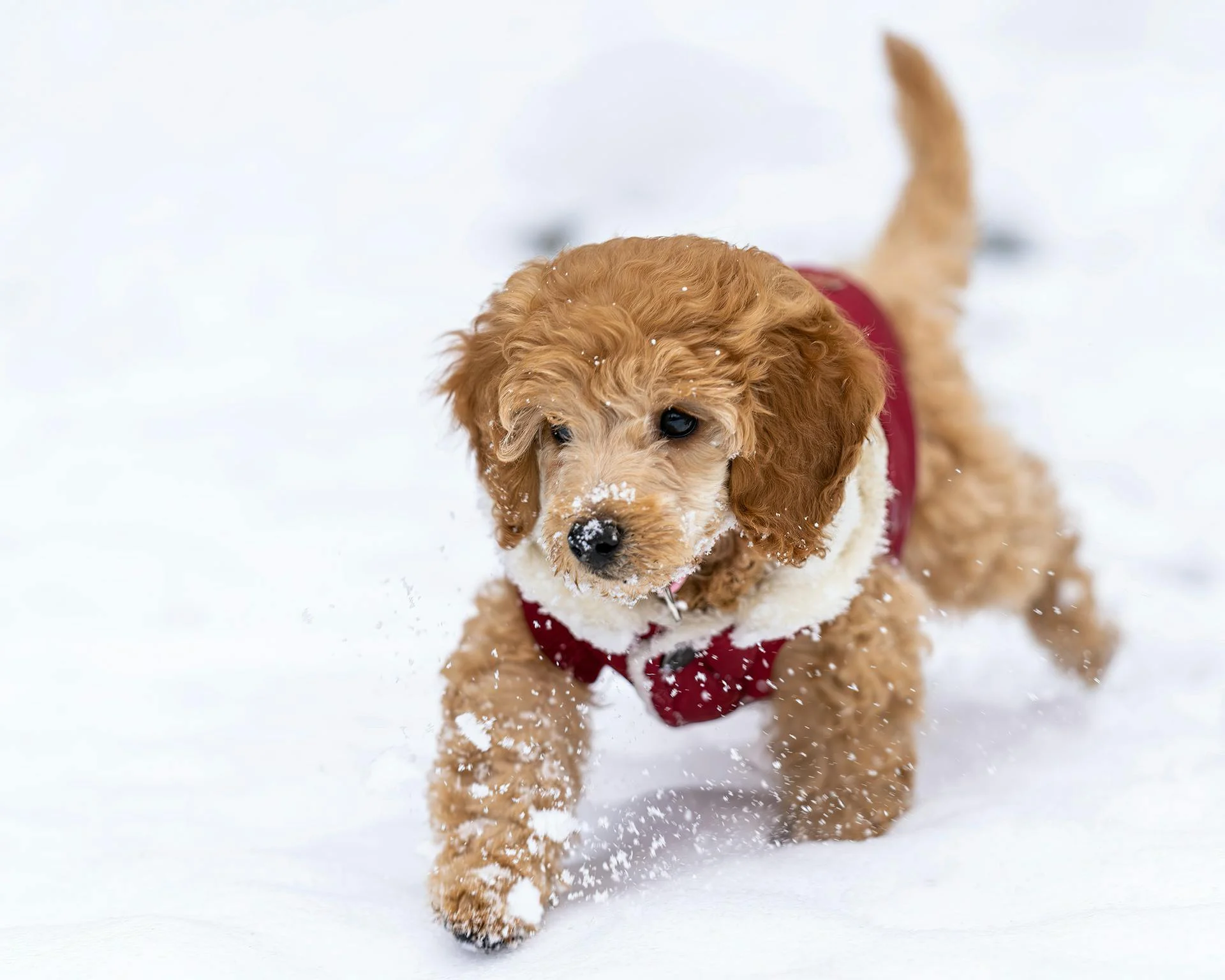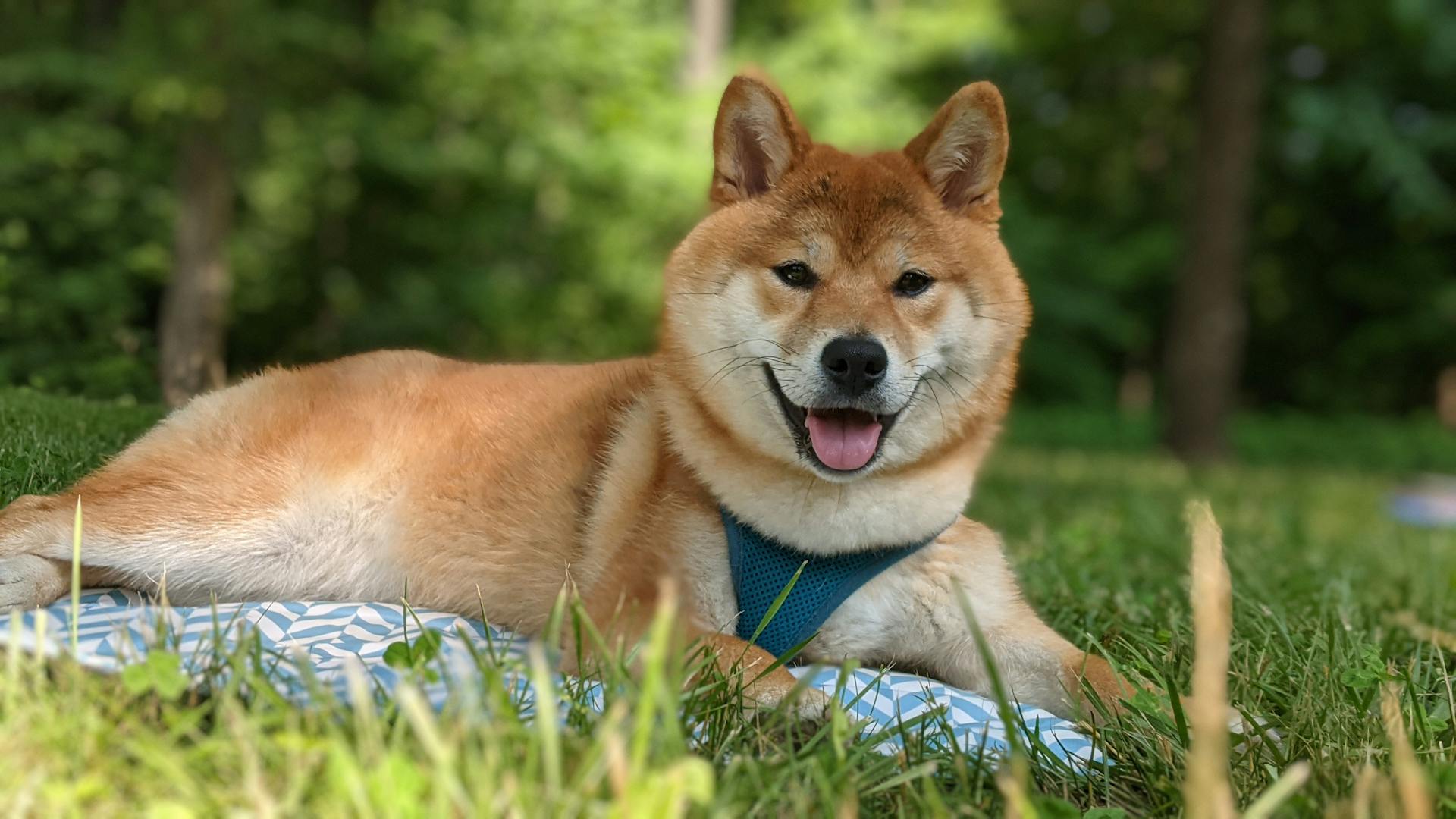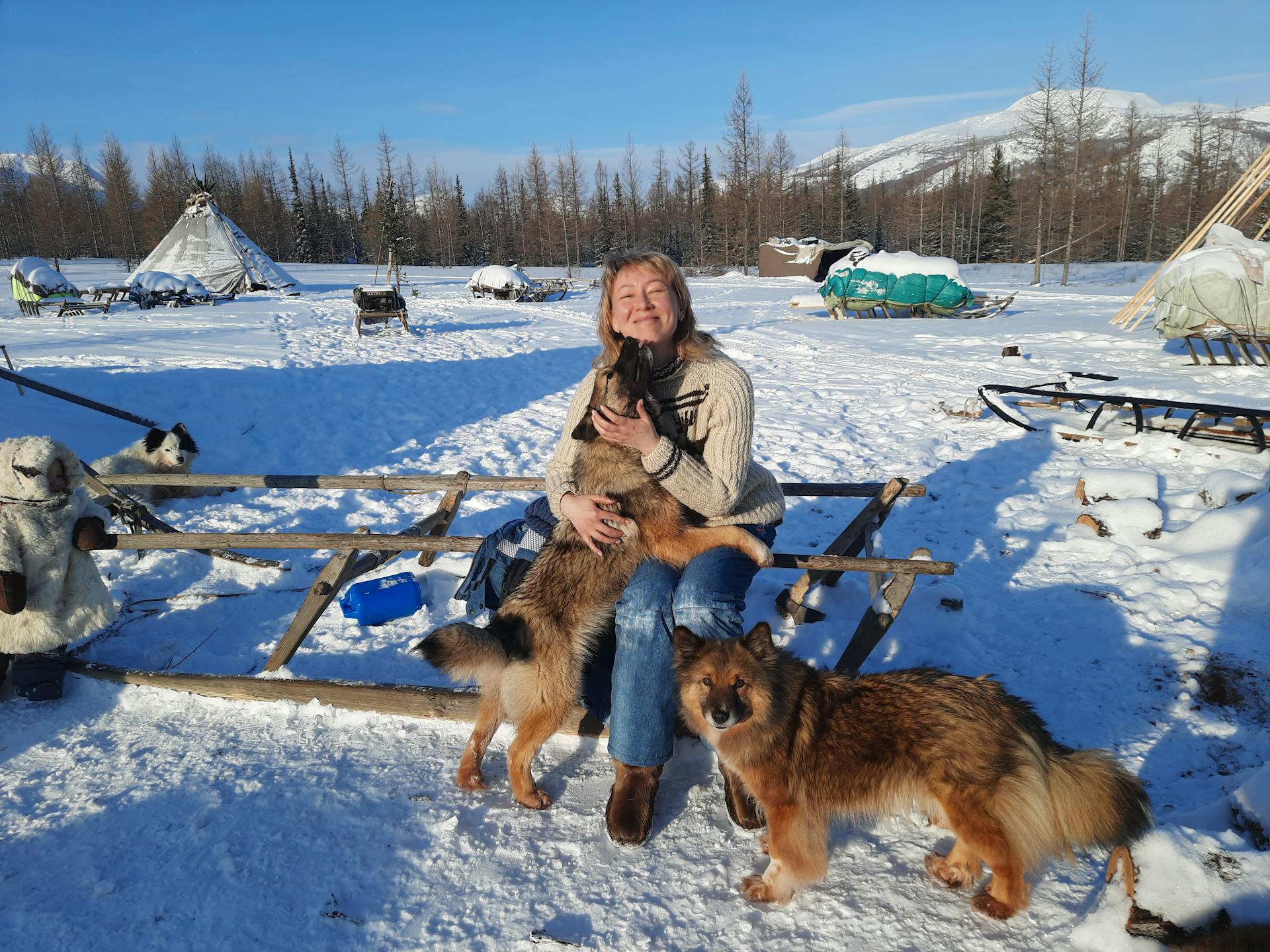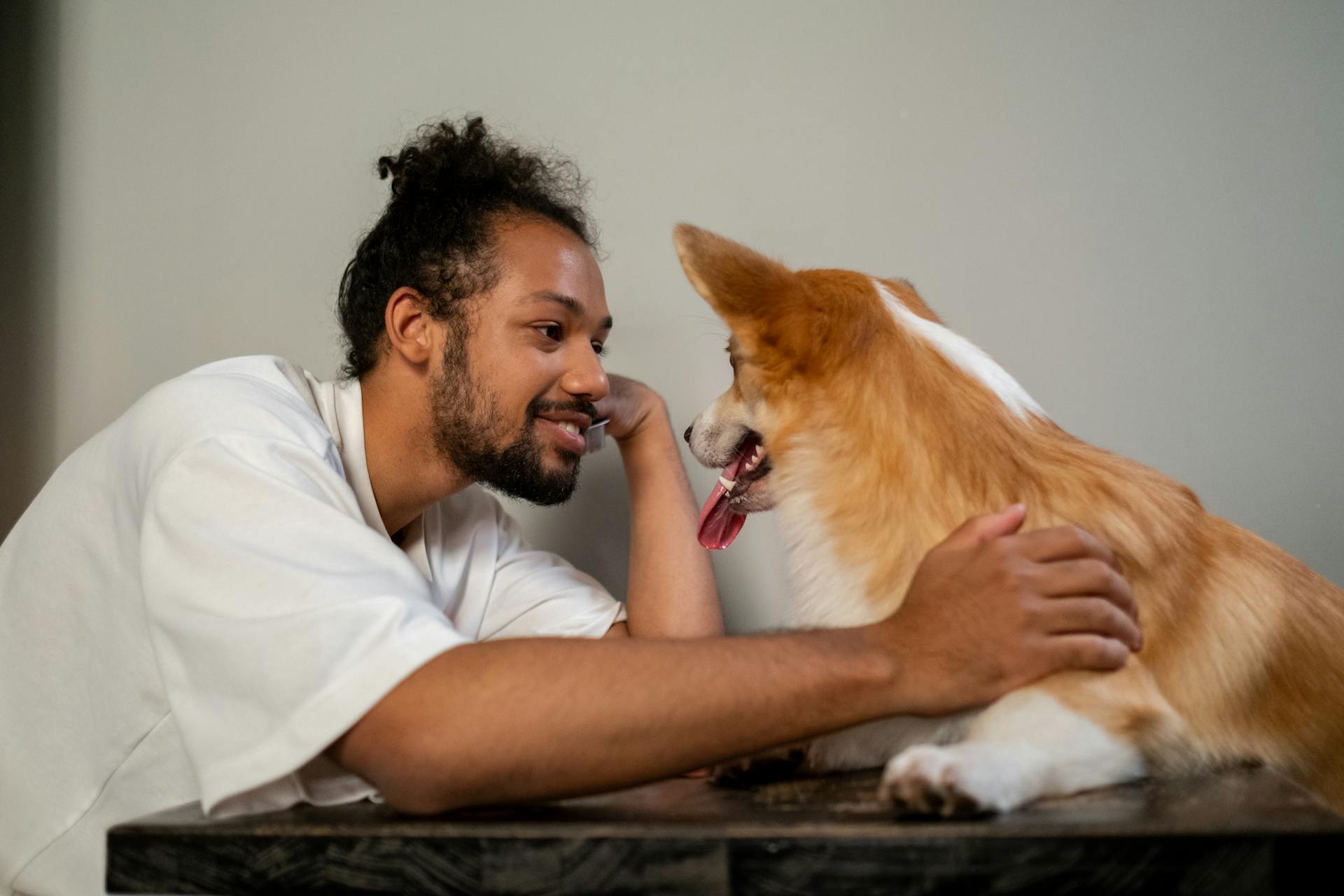
Goldendoodles typically go into heat between 6 to 12 months of age, with the exact timing depending on their individual development and breeding history.
Most Goldendoodles will experience their first heat cycle every 6 to 8 months, with each cycle lasting around 2 to 3 weeks.
During this time, your Goldendoodle will display physical and behavioral signs such as swelling of the vulva, bloody discharge, and restlessness.
If you're planning to breed your Goldendoodle, it's essential to monitor their heat cycles closely to ensure you're prepared for the breeding process.
Goldendoodle Heat Cycle
The Goldendoodle heat cycle is a natural process that all female Goldendoodles go through. It typically lasts two to four weeks, with a pregnancy or resting phase following the estrus period. Most Goldendoodles have about two heat cycles per year.
Each heat cycle is divided into four stages: proestrus, estrus, diestrus, and anestrus. Proestrus lasts approximately nine to 10 days, during which Goldendoodles may appear more anxious or clingy. They may also exhibit physical signs such as licking of the genitals, swelling of the vulva, and a bloody discharge.
Recommended read: Can You Breed Two Goldendoodles
Here's a brief overview of each stage:
- Proestrus: 9-10 days, characterized by anxiety, clinginess, and physical signs such as licking of the genitals, swelling of the vulva, and a bloody discharge.
- Estrus: 9 days, but can vary between 3-21 days, during which the female is receptive to mating and may exhibit a vaginal discharge that changes to a straw color.
- Diestrus: signals the end of the heat cycle, during which the discharge ceases and the Goldendoodle is no longer interested in mating. This stage typically lasts around 60 days.
- Anestrus: the dormant period when no sexual activity takes place, lasting between 2-5 months, but typically around 3 months.
What Is a Dog Cycle?
A dog cycle, also known as a heat cycle, is a natural process that occurs in female dogs. It's a vital part of their reproductive cycle, and understanding it can help you better care for your Goldendoodle.
The heat cycle in dogs typically lasts around six months, with each cycle repeating throughout their life. This is because dogs don't go through menopause like humans do.
The cycle is made up of four distinct stages: proestrus, estrous, diestrus, and anestrus. Each stage has unique physical and behavioral changes that you should be aware of.
Here's a breakdown of each stage:
- Proestrus Stage: lasts around 9-10 days, characterized by anxiety, clinginess, and physical changes like a bloody discharge and vulva swelling.
- Estrous Stage: lasts around 9 days, during which the female dog is receptive to mating and may become aggressive towards other females.
- Diestrus Stage: signals the end of the heat cycle, lasting around 60 days, during which the discharge ceases and the dog is no longer interested in mating.
- Anestrus Stage: a dormant period lasting around 3 months, during which no sexual activity takes place.
It's essential to recognize these signs and stages to better support your Goldendoodle during this biological event.
Cycle Stages & Timelines
A Goldendoodle's heat cycle is a natural process that can be a bit confusing if you're not familiar with it. The cycle typically lasts two to four weeks, with two heat cycles per year being the norm.
The heat cycle is divided into four stages: proestrus, estrus, diestrus, and anestrus. Each stage has its own unique characteristics and behaviors.
The proestrus stage lasts around 9-10 days and is marked by anxiety, clinginess, and physical changes such as licking of the genitals and swelling of the vulva.
The estrus stage usually lasts 9 days but can vary between 3-21 days. This is the period when the female is receptive to mating and may exhibit a vaginal discharge that changes to a straw color.
The diestrus stage signals the end of the heat cycle and lasts around 60 days. During this time, the discharge will cease, and the Goldendoodle will no longer be interested in mating.
The anestrus stage is the dormant period when no sexual activity takes place and can last between 2-5 months, typically around 3 months.
Here is a summary of the stages and their approximate durations:
It's essential to understand the heat cycle to provide the best care for your Goldendoodle. Knowing what to expect can help you prepare for any abnormal behaviors or problems that may arise during this time.
Identifying Heat Cycle Signs
A swollen vulva is one of the first physical symptoms you may notice, but it can be hidden by a long coat. You may not even see the swelling until it's quite pronounced.
A bloody discharge from the vulva is another sign of heat, and it will change color as the cycle progresses. The discharge will be redder at the beginning of the heat cycle and will become lighter pink to clear towards the end.
Your Goldendoodle may urinate more frequently and in a marking manner to spread her scent. You may also notice her raising her bottom into the air, especially if male dogs are around.
Frequent licking of the genital area is a common behavior during heat, as your dog tries to clean herself and relieve discomfort. You may also notice increased thirst and urination, as your dog tries to spread her hormone- and pheromone-laced urine.
Here are some common behavioral signs of heat:
- Nervousness or fidgeting
- Moving tail over to one side
- Seems to be looking for male dogs
- Lifting of the rump area
- Aggression, in some cases
- Frequent cleaning (licking) of the genital area
Keep in mind that every dog is different, and not all Goldendoodles will exhibit all of these signs. But by being aware of these common indicators, you can better support your furry friend during her heat cycle.
Breeding and Pregnancy
Your Goldie can get pregnant right from her very first heat, but experts recommend waiting until she's around 18-24 months old. This is considered best practice among breeders.
In theory, Goldendoodles can get pregnant during their first heat, but waiting until they're a bit older can help prevent problems.
Experts at the American Kennel Club recommend waiting at least three heats before breeding your Goldie. This is to avoid significant problems, both physical and behavioral, that can arise when a young female reproduces too early.
Young female Goldendoodles are more likely to neglect or even reject their puppies if they breed too early.
For more insights, see: Pomeranian Dog Pregnancy
Caring for Your Goldendoodle
If you're a new Goldendoodle owner, you might be wondering how to care for your furry friend during her heat cycle. Keep her away from all males if you're not planning to breed her, as she'll become distressed if she can't have access to them.
Your female Goldendoodle may have a lot of nervous energy while she's in heat, so take her on more frequent walks or increase her normal exercise regime by an additional 20 minutes a day to help her expel this energy.
To keep the house clean, consider using doggy diapers or laying out old towels for your Goldie to sleep on.
Helping My Dog
Give your dog in heat extra love and attention, and take her on regular, short walks to keep her calm. These walks should be in areas with fewer other dogs around to avoid any aggression.
Keep your dog on a leash at all times during this period to prevent unwanted interactions.
A calm and safe space in the home is essential for your dog's well-being. This can be a designated area where she can relax without feeling overwhelmed.
You can use doggy diapers or old towels to keep the house clean, or restrict her to specific areas that are easier to clean. Just be sure not to confine her to a small space, as this can be unfair and uncomfortable for her.
4 Tips for Caring a Pet
Caring for your Goldendoodle requires attention to detail, especially during her heat cycle. Keep her on a leash during walks to prevent unwanted encounters with male dogs.
You'll want to maintain her hygiene by providing pet-friendly wipes or doggy diapers to manage the discharge. This will help keep your home clean and prevent accidents.
Dogs in heat typically urinate more frequently, so give your Goldendoodle extra potty breaks during this time. This will help prevent accidents and keep her comfortable.
To help your Goldendoodle expel nervous energy, take her on more frequent walks or increase her normal exercise regime by an additional 20 minutes a day. This will help her relax and feel more calm.
General Information
Goldendoodles are a mix of breeds, but they generally go into heat like their parent breeds. A female Goldendoodle typically experiences her first heat cycle between 6 to 12 months of age.
Changes in her genitalia and some discharge are common signs of heat in a Goldendoodle. These changes are usually noticeable and can be a sign that she's ready to mate.
The heat cycle of a Goldendoodle can last anywhere from 2 to 3 weeks, but it can vary depending on the individual dog.
Frequently Asked Questions
What age can a Goldendoodle get pregnant?
A female Goldendoodle can get pregnant between 6 to 18 months of age, marking the start of her first heat cycle. This critical reproductive milestone requires careful consideration for responsible pet ownership.
Sources
- https://www.thesprucepets.com/heat-cycle-for-dogs-3385378
- https://www.totallygoldens.com/when-do-goldendoodles-go-into-heat/
- https://doodledoods.com/when-do-goldendoodles-go-into-heat/
- https://www.oodlelife.com/when-do-goldendoodles-go-into-heat/
- https://www.hepper.com/when-do-goldendoodles-go-into-heat/
Featured Images: pexels.com


